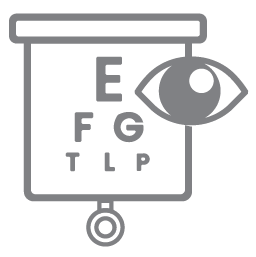 Eye Center
Eye Center

Vision and eyesight are something that everyone cannot do without. We should take care and maintain the efficiency of these important organs. However, there are many diseases that can damage our eyesight, and there are many causes of these diseases. Many diseases come from daily habits, such as people who work in front of computer screens every day. Just this alone can cause these organs to deteriorate. Imagine if one day the image we see throughout our lives turns into complete darkness, how would we feel? Preventing eye diseases is better than letting them occur and then treating them later.
Medical services
- Eye disease treatment services
- Eye examination for measuring visual acuity
- Visual screening and lazy eye screening
- Eye care advice
Common eye diseases
There are four types of common eye diseases:
Pinguecula
- Pinguecula is caused by an overgrowth of tissue on the white part of the eye. It appears as a yellowish bump and can lead to pterygium if left untreated. The causes include prolonged sun exposure, dry eyes, and dust. It can be treated with eye drops, but surgery may be necessary for severe cases.
Pterygium
- Pterygium, which is caused by an overgrowth of tissue that can encroach upon the cornea and affect vision. The causes are similar to pinguecula. It can be treated with eye drops, but surgery may be necessary if severe. However, there is a chance that it can recur after surgery, so it is important to take good care of the eyes after the procedure.
Cataracts
- Cataracts are caused by the deterioration of the eye lens, resulting in impaired vision. It is common in elderly people and can also be caused by prolonged sun exposure, etc. It can be treated with surgery.
Glaucomas
- Glaucomas are caused by damage to the optic nerve, which results in vision loss. or high eye pressure. It requires continuous care to prevent further damage, and surgery may also be necessary.
- “Lazy Eye” or amblyopia is caused by visual abnormalities, such as strabismus or a significant difference in the refractive power of the eyes. Patients may experience headaches and decreased visual acuity, with the most severe consequence being permanent loss of vision. Treatment options include stimulating the use of the weaker eye, along with the use of eye drops or surgery
- Uveitis can result from the impact of other diseases such as tuberculosis, encephalitis, or bacterial infections. Patients may experience eye pain and increased discomfort in bright light. Uveitis can resolve on its own, but may recur. Treatment can be achieved through a diagnosis by an ophthalmologist to determine the underlying cause and recommend appropriate treatment.
_________________________________
For additional inquiries
Opening days : Open everyday
Opening hours : 8:00 am-8:00 pm
Building / Floor : A/16 and B/1
Contact number : 1390 ext. 282
Line Official : @petcharavej Click
